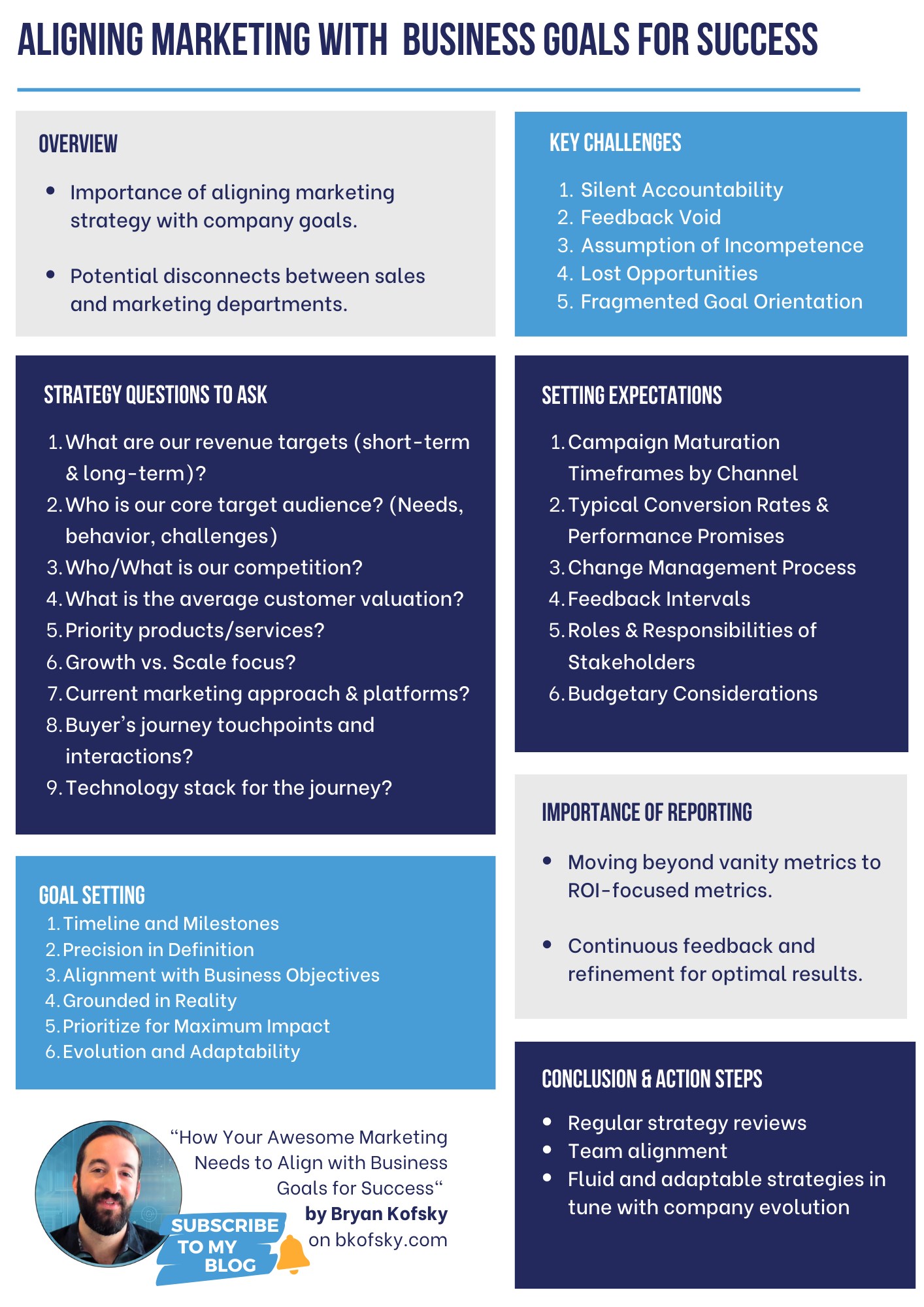Bridging the Gap: Marketing and Business Goals
When it comes to running a successful business, it is crucial to align your marketing strategy with your business goals. Without a clear connection between the two, your efforts may be wasted, and you may not see the results you desire. Bridging the gap between marketing and business goals is essential for driving growth, maximizing profitability, and ultimately achieving success.
Marketing is a powerful tool that can help businesses reach their target audience, generate leads, and increase brand awareness. However, without a solid understanding of your business goals, your marketing efforts may fall short. It is important to establish clear and measurable business goals before developing your marketing strategy. This will ensure that your marketing efforts are aligned with your overall objectives and will help you stay focused on what is most important for your business.
One of the key ways to bridge the gap between marketing and business goals is to create a comprehensive marketing plan that outlines your objectives, target audience, key messages, and tactics for reaching your goals. By clearly defining your business goals and how your marketing efforts will support them, you can create a roadmap for success and ensure that all of your marketing activities are working towards the same end result.
In addition to having a clear marketing plan, it is important to regularly review and analyze your marketing efforts to ensure that they are aligned with your business goals. By tracking key performance indicators (KPIs) such as website traffic, lead generation, conversion rates, and ROI, you can determine the effectiveness of your marketing campaigns and make adjustments as needed to ensure that you are on track to achieve your business goals.

Image Source: bkofsky.com
Another important aspect of bridging the gap between marketing and business goals is communication. It is essential for all members of your team, from marketing to sales to operations, to be on the same page when it comes to your business objectives and how your marketing efforts support them. By fostering open communication and collaboration among team members, you can ensure that everyone is working towards the same goals and that your marketing strategy is aligned with your overall business strategy.
Ultimately, bridging the gap between marketing and business goals is essential for driving growth and achieving success. By establishing clear objectives, creating a comprehensive marketing plan, tracking KPIs, and fostering open communication among team members, you can ensure that your marketing efforts are working towards the same end result as your business goals. By aligning your marketing strategy with your business goals, you can maximize profitability, drive growth, and ultimately achieve the success you desire.
Mapping Success: Aligning Strategy for Growth
In today’s fast-paced business world, it’s more important than ever to align your marketing strategy with your business goals in order to achieve growth and success. By connecting the dots between your marketing efforts and the overall objectives of your company, you can ensure that every campaign, promotion, or advertisement is working towards the same end goal.
When it comes to mapping success and aligning strategy for growth, it’s essential to start by clearly defining your business goals. Whether you’re looking to increase sales, expand into new markets, or improve customer loyalty, having a clear understanding of what you want to achieve is the first step towards creating a successful marketing strategy.
Once you have your goals in place, the next step is to align your marketing strategy with these objectives. This means carefully planning and executing campaigns that are designed to support your business goals and drive your company towards growth. For example, if your goal is to increase sales by 20% in the next year, your marketing strategy should focus on tactics that will help you reach this target, such as targeted advertising, promotions, or partnerships.
One of the key ways to align your marketing strategy with your business goals is to make use of data and analytics. By tracking and analyzing the performance of your marketing campaigns, you can gain valuable insights into what is working and what isn’t, allowing you to make adjustments and improvements as needed. This data-driven approach can help you to ensure that every marketing effort is contributing to your overall business objectives.
Another important aspect of aligning your marketing strategy with your business goals is to ensure that all of your messaging and branding is consistent across all channels. This means that whether a customer interacts with your company through social media, email, or in person, they should receive a consistent and cohesive message that reflects your business goals and values. By maintaining this consistency, you can build trust and credibility with your audience, and ensure that your marketing efforts are working towards the same end goal.
In addition to aligning your marketing strategy with your business goals, it’s also important to regularly review and evaluate your efforts to ensure that you are on track towards achieving growth. By setting key performance indicators (KPIs) and regularly measuring and analyzing your results, you can identify areas for improvement and make strategic adjustments to your marketing strategy as needed.
By mapping success and aligning strategy for growth, you can ensure that every marketing effort is working towards the same end goal of driving your business forward. By clearly defining your business goals, aligning your marketing strategy with these objectives, making use of data and analytics, maintaining consistency in your messaging, and regularly reviewing and evaluating your efforts, you can create a powerful and effective marketing strategy that will help you achieve growth and success in today’s competitive business landscape.
How to Align Your Marketing Strategy with Your Business Goals